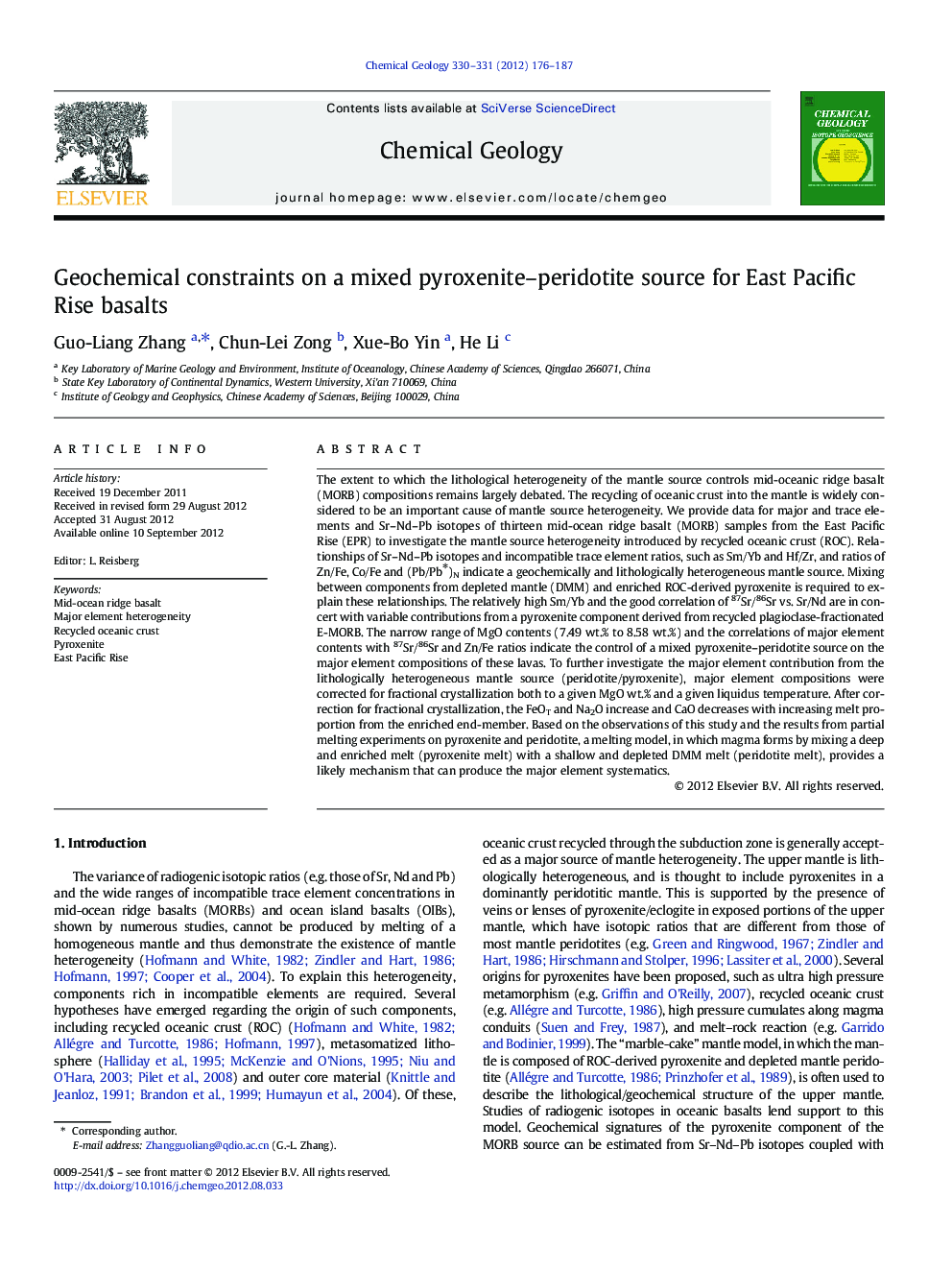| کد مقاله | کد نشریه | سال انتشار | مقاله انگلیسی | نسخه تمام متن |
|---|---|---|---|---|
| 4699245 | 1637635 | 2012 | 12 صفحه PDF | دانلود رایگان |

The extent to which the lithological heterogeneity of the mantle source controls mid-oceanic ridge basalt (MORB) compositions remains largely debated. The recycling of oceanic crust into the mantle is widely considered to be an important cause of mantle source heterogeneity. We provide data for major and trace elements and Sr–Nd–Pb isotopes of thirteen mid-ocean ridge basalt (MORB) samples from the East Pacific Rise (EPR) to investigate the mantle source heterogeneity introduced by recycled oceanic crust (ROC). Relationships of Sr–Nd–Pb isotopes and incompatible trace element ratios, such as Sm/Yb and Hf/Zr, and ratios of Zn/Fe, Co/Fe and (Pb/Pb⁎)N indicate a geochemically and lithologically heterogeneous mantle source. Mixing between components from depleted mantle (DMM) and enriched ROC-derived pyroxenite is required to explain these relationships. The relatively high Sm/Yb and the good correlation of 87Sr/86Sr vs. Sr/Nd are in concert with variable contributions from a pyroxenite component derived from recycled plagioclase-fractionated E-MORB. The narrow range of MgO contents (7.49 wt.% to 8.58 wt.%) and the correlations of major element contents with 87Sr/86Sr and Zn/Fe ratios indicate the control of a mixed pyroxenite–peridotite source on the major element compositions of these lavas. To further investigate the major element contribution from the lithologically heterogeneous mantle source (peridotite/pyroxenite), major element compositions were corrected for fractional crystallization both to a given MgO wt.% and a given liquidus temperature. After correction for fractional crystallization, the FeOT and Na2O increase and CaO decreases with increasing melt proportion from the enriched end-member. Based on the observations of this study and the results from partial melting experiments on pyroxenite and peridotite, a melting model, in which magma forms by mixing a deep and enriched melt (pyroxenite melt) with a shallow and depleted DMM melt (peridotite melt), provides a likely mechanism that can produce the major element systematics.
► Elemental and isotopic compositions indicate a geochemical and lithological heterogeneity in the mantle source.
► The melting of ROC (pyroxenite) contributes significantly to the major element heterogeneity of MORBs.
► The major element systematics can be produced by mixing a shallow peridotite (DMM) melt and a deep pyroxenite (ROC) melt.
Journal: Chemical Geology - Volumes 330–331, 10 November 2012, Pages 176–187